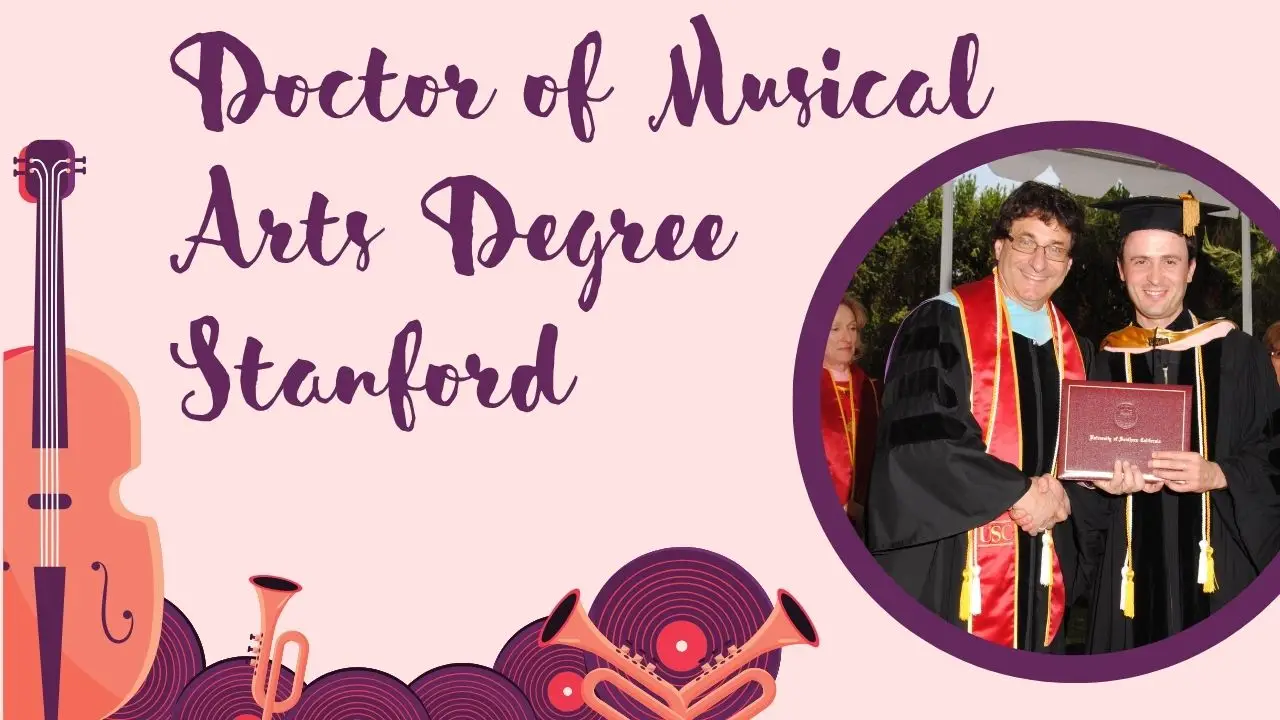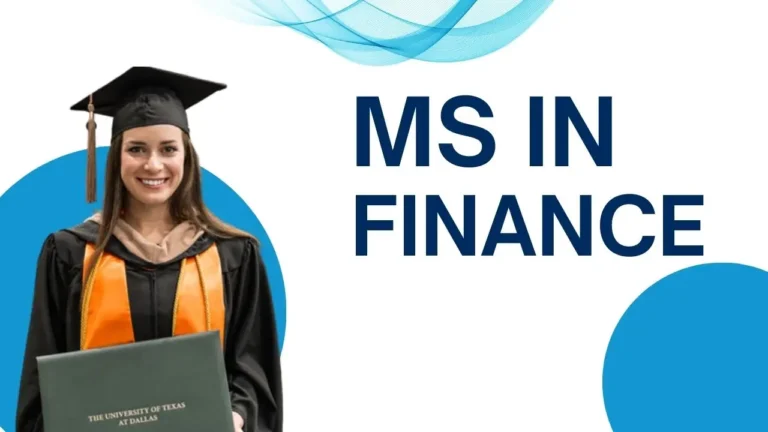Doctor of Musical Arts Degree at Stanford: Career Guide
If you are passionate about music and want to further your career, getting a Doctor of Musical Arts (DMA) degree may be the best course.
A prestigious university offering this advanced degree is Stanford University, which is renowned for its academic rigor and high caliber of music. To prepare students to become leaders in the music industry, Stanford’s Doctor of Musical Arts program combines performance, composition, research, and interdisciplinary study.
The Stanford Doctor of Musical Arts Degree requirements, advantages, and opportunities will be discussed in this article to help you reach your career objectives in the music business.
Doctor of Musical Arts Degree at Stanford Overview
| Duration | 2 years |
| Course Level | PG Degree |
| Mode of Course | Full Time |
| International Students Admission Website | Go to Website |
| Tuition & Fees | ₹33.87 Lakh |
| Type of University | Private |
What is a Doctor of Musical Arts Degree?
The Doctor of Musical Arts (DMA) is one of the most advanced music degrees. It is designed for individuals who desire to combine academic and research-based knowledge with extraordinary performance skills. In contrast to the usual Ph.D., the DMA places equal emphasis on practical music performance, composition, and instruction as it does research and theory. The target audience for this degree includes musicians interested in conducting, performing, composing, and teaching music.
A Doctor of Musical Arts degree at Stanford provides a unique opportunity for anybody thinking about going to college to study music to work with excellent teachers, have access to cutting-edge resources, and fully engage in a vibrant musical community.
Benefits of getting a Fine Arts degree from Stanford
- Stanford, California, graduates with a fine arts degree should anticipate competitive pay; graphic artists can expect to make around $64,500 a year, while animators can earn up to $111,130. The need for creative workers across a range of businesses is reflected in this financial potential.
- With chances to work on fascinating projects that improve their portfolios and income potential, fine arts graduates can follow a variety of professional choices, such as becoming illustrators or art therapists. One local university graduate, for instance, worked well with companies to produce powerful visual material.
- Students may mix their education with employment or personal obligations by earning a Fine Arts degree online, which provides flexibility and convenience. An online graduate from a renowned Stanford University discovered that this format allowed them to hone their artistic abilities while accumulating useful work experience.
What is the average cost of a Fine Arts degree from Stanford?
In-State Tuition: The average annual in-state tuition for a Fine Arts degree for students enrolled in California’s public universities is around $22,609. This number reflects the greater expenses of specialist programs, which sometimes need access to knowledgeable teachers and a lot of studio time. Planning and budgeting require an understanding of the typical cost of a Stanford Fine Arts degree.
Out-of-State Tuition: Out-of-state tuition averages about $39,895 per year, which significantly raises the financial burden for people traveling from outside of California. Although this may seem like a big amount, many graduates discover that the special possibilities in California’s thriving arts sector make the investment worthwhile.
Tuition at Private Institutions: The average annual tuition for students thinking about attending private universities is much higher, at about $39,895. Graduates from these schools frequently talk about how their individualized attention and small class sizes helped them develop their artistic abilities. In California, tuition costs for Fine Arts degrees can fluctuate greatly, therefore, it’s important to investigate several schools.
Admissions Requirements
- A music master’s degree or its equivalent.
- Excellent academic standing with a focus on music studies.
- Outstanding compositions or performances that highlight your skills in the field of your choice.
- reference letters from mentors, instructors, or professional musicians.
- A personal statement outlining your objectives, desires, and motivations for obtaining the DMA degree.
- Submission of a composition or audition to showcase your creative and musical abilities.
Conclusion
Students who pursue a Doctor of Musical Arts degree at Stanford have the chance to combine composition, performing, and research in a way that prepares them for leadership positions in the music business. With top-notch instructors, state-of-the-art facilities, and a thriving music community, this advanced degree can greatly improve job opportunities. However, before applying, potential students should think about the program’s financial needs and competitive standards.






